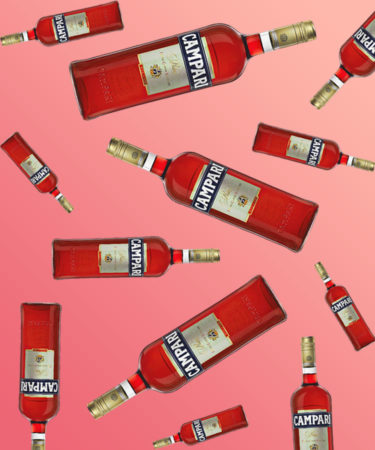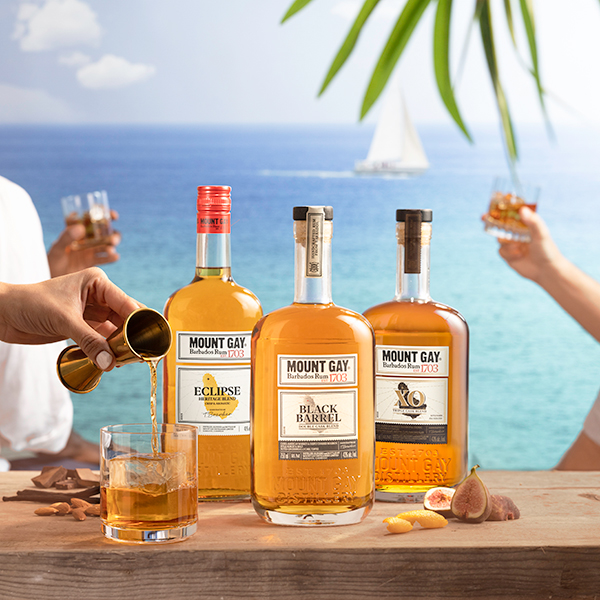Few bottles stand out on the liquor shelf quite like crimson-hued Campari. Even when it’s poured into a glass, the drink’s distinct color makes it instantly recognizable.
Though contenders have emerged to challenge Campari’s dominance, when it comes to mixing classic cocktails like Negronis and Americanos, bartenders agree: There’s simply no substitute for Campari.
Want to learn more about this quintessential Italian apéritif? Here are 12 things you should know about Campari.
Campari is older than Italy.
In 1860, Gaspare Campari founded his eponymous drinks brand in the Italian town of Novara, 30 miles west of Milan. The company’s formation predated the unification of Italy by a decade.
Classic cocktails and a landmark shopping mall helped popularize the brand.
Shortly after launching his drinks brand, Campari opened a wine shop in Italy’s oldest shopping mall, Galleria Vittorio Emanuele II. Located in the heart of Milan, steps from the city’s Duomo, the brand transformed the wine shop into the Camparino aperitivo bar in 1915, offering a range of proprietary apéritifs and liqueurs. None were more popular than its bitter red apéritif, which was helped, in no small part, by its inclusion in a number of emerging cocktails (more on those later).
Only two of Gaspare’s drinks survived succession of ownership.
When Camapri’s sons Davide and Guido took control of the company in 1920, they reduced the brand’s portfolio to drop some of Gaspare’s more experimental bottlings, downsizing to just one apéritif, Bitter Campari, and a clear, raspberry-based bittersweet liqueur, Cordial Campari. Production of the cordial ceased in the 1990s.
Campari pours definitively classic cocktails.
In the 1920s, the International Bartenders Association included two Campari cocktails in its list of classic drinks, The Unforgettables. With their inclusion, the Americano and the Negroni became two of a small handful of recipes where a specific liquor brand was named among the ingredients.
Not included in the list, but similarly iconic, are the Negroni Sbagliato (one part Campari, one part red vermouth, and one part sparkling wine) and the Milano-Torino, or Mi-To, which mixes equal parts Campari (which comes from Milan) and red vermouth (which traditionally hails from Turin).
Some Campari cocktails represent the unification of Italy.
Named after Giuseppe Maria Garibaldi, the Italian general who contributed to the country’s unification, the Garibaldi mixes Campari, cane syrup, and freshly squeezed orange juice. The drink is a symbol of the unification of the north and south of the country, with Campari representing Milan and Sicilian oranges representing the south.
Campari is much more than a bitter, red apéritif.
Though best associated with the bitter red apéritif, Campari is one of a number of liquor brands that make up Gruppo Campari. The group currently has offices and production facilities in 25 countries worldwide and comprises more than 50 different alcohol brands, including Aperol, Grand Marnier, Skyy Vodka, and Wild Turkey.
Art is integral to Campari’s history.
Starting in the 1920s, Campari enlisted a number of renowned artists to create posters advertising the drink and its iconic cocktails. The artists included Ugo Mochi, Adolf Hohenstein, Marcello Nizzoli, and Leonetto Cappiello, who created the famous “Spiritello” poster, in which a sprite emerges from an orange peel holding a bottle of Campari.
Another piece, “Manifesto Campari,” designed by Bruno Munari in 1964, coincided with the opening of the M1 subway line in Milan. The image features a fragmented composite of a number of different Campari logos, which were designed to be identifiable at a glance or at speed (i.e., from within a moving subway car). The graphic is now permanently exhibited at the Museum of Modern Art in New York.
Campari also has its own gallery.
Galleria Campari opened in 2010, the year of the brand’s 150th anniversary. It’s located inside the Liberty building in Sesto San Giovanni, Milan, which was also the first Campari production plant.
Campari has always been bitter, but it’s not always sold that way.
Traditionally, posters for the red apéritif included the words “Bitter Campari” and those touting the clear liqueur read “Cordial Campari.” With the brand no longer needing to differentiate between the two drinks, it has since dropped the word “bitter” from advertisements and massively reduced its prominence on bottle labels.
Campari changes around the world.
Depending on where it’s bottled and sold, Campari appears with a number of different alcoholic strengths. Iceland and Sweden receive the lowest-strength bottling, at 21 percent ABV, while in the U.S., Campari registers 24 percent ABV. Those wishing to sample Campari with a kick should head to Jamaica, where the bitter apéritif enters the bottle at 28.5 percent ABV.
Campari’s recipe is a closely guarded secret.
Campari’s bittersweet flavor profile arrives via the infusion of alcohol and water with bitter herbs, aromatic plants, and fruit. According to Eligio Bossetti, a historian at Villa Campari, only three individuals know the exact recipe, which is rumored to contain up to 80 ingredients. The formula is so secret, in fact, that the identity of the three recipe holders is also a closely guarded secret.
The color is (usually) artificial.
Traditionally, an insect-based coloring made from cochineal bugs was used to give Campari its crimson hue. In 2006, use of the insect was discontinued in most countries, including the United States, with artificial coloring included as a replacement.
At least one market, however, still uses cochineal. On Swedish bottles of Campari, the label lists the coloring agent E120, which is also known as carmine, carminic acid, or cochineal.

